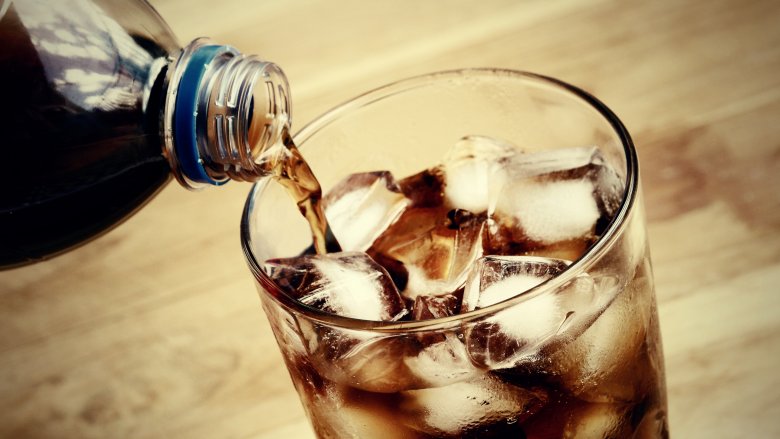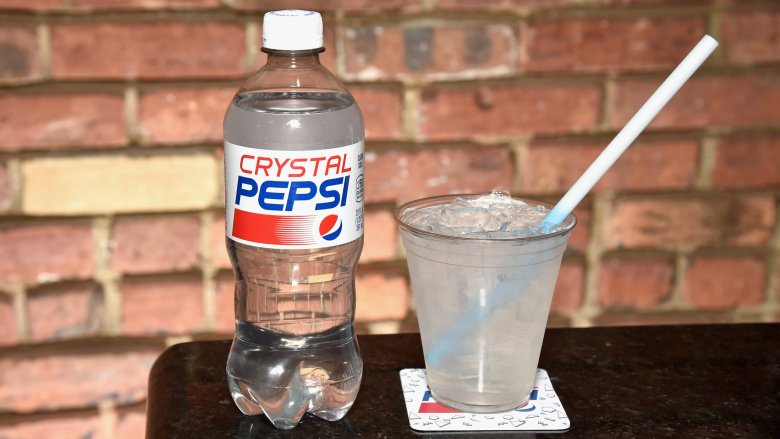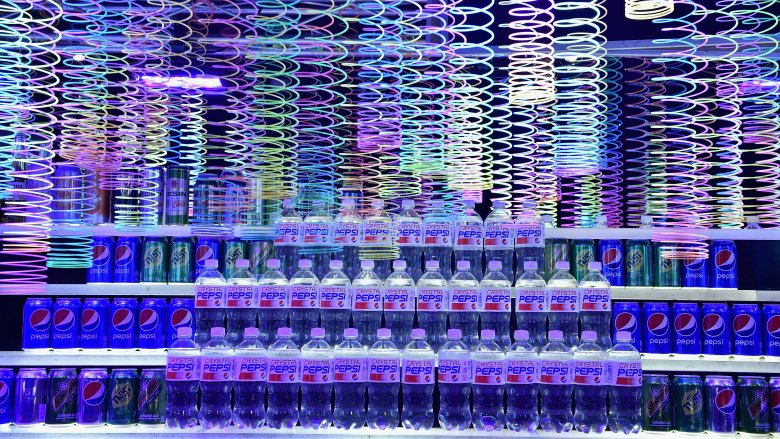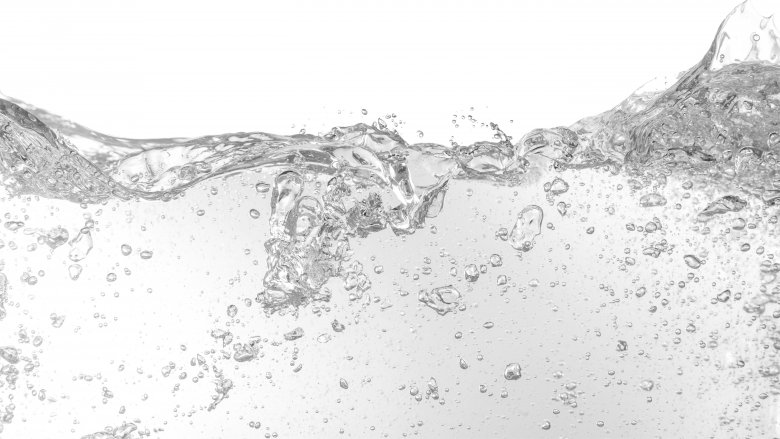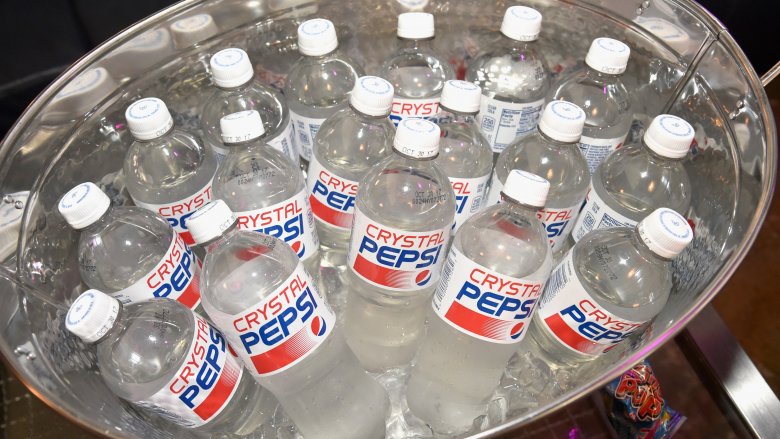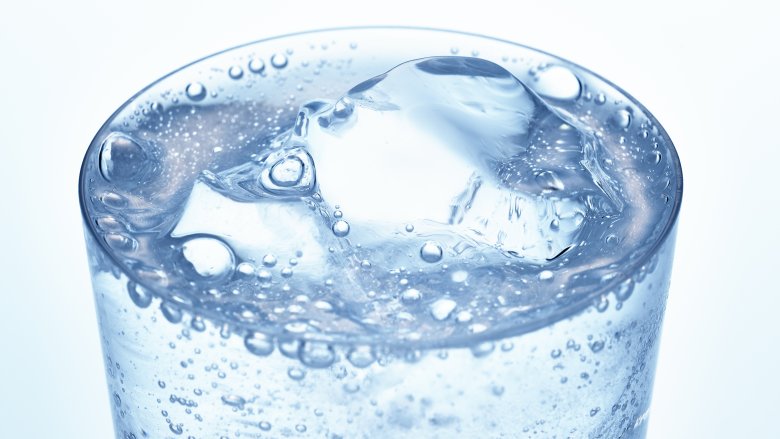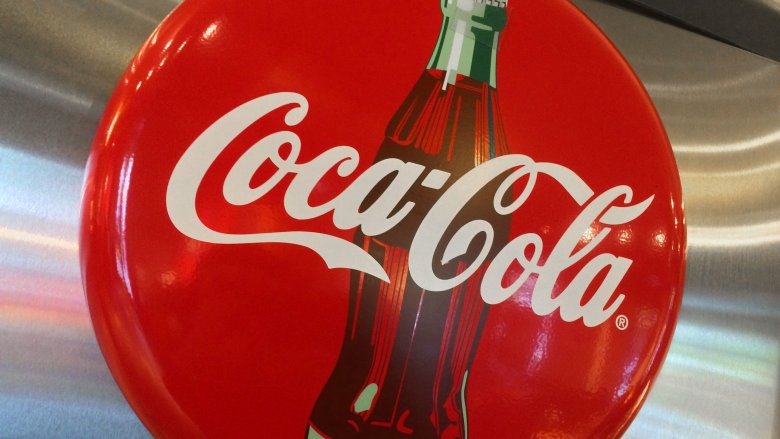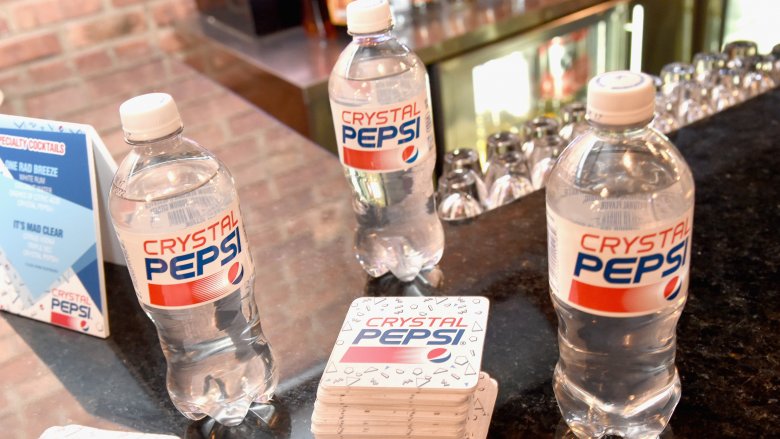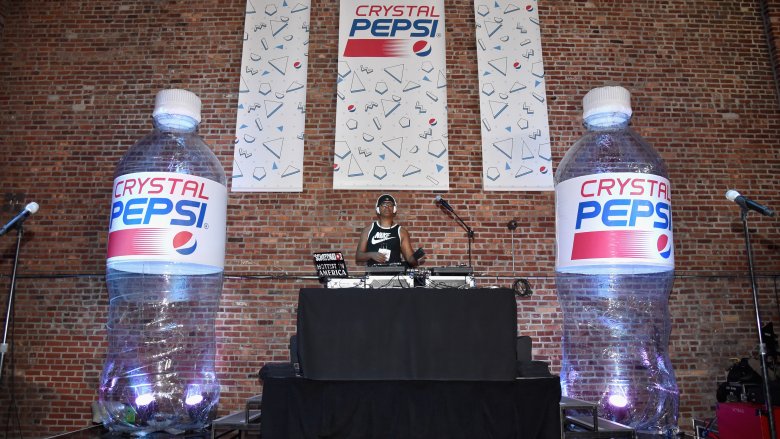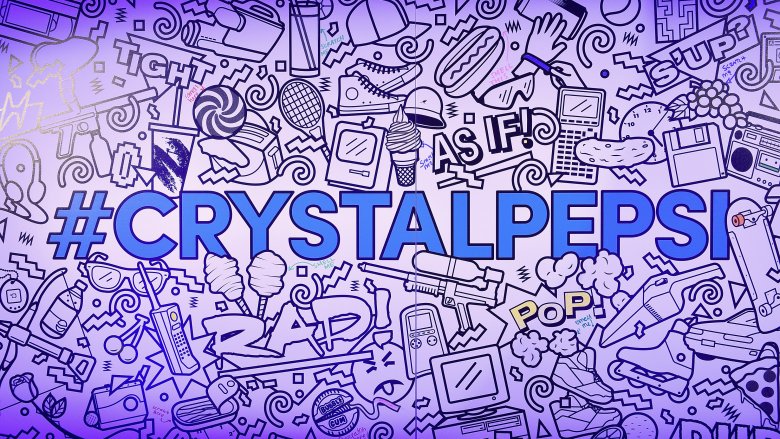Why Crystal Pepsi Was A Flop
Ask anyone who was there and they'll agree — the 1990s were a very strange time. Those years were defined by grunge music, funfetti cakes, Friday night sitcoms, O.J. Simpson, Lorena Bobbitt, and the tragically short life of Pepsi's foray into the world of clear sodas. Crystal Pepsi was definitely weird, and it was such a fun sort of gimmick that it was almost possible to believe it might just catch on. You might even get all the nostalgic feels at just the thought of drinking one. But it absolutely did not catch on — in fact, it completely bombed — and the story of why Crystal Pepsi failed is a weird one that involves consumer anxiety, mind games, sneaky competitors, a bit of corporate sabotage, and Nazis (for real). It might not have ruled the 1990s soda market like Pepsi intended, but the story of Crystal Pepsi is anything but boring.
It played tricks on our minds
Crystal Pepsi's original shelf life only lasted for a few years in the early '90s, and that was hardly long enough to give it a fighting chance... it seemed. But, according to LiveScience, the clear soda was set up for failure beginning with the way sodas were advertised, as far back as the late 19th century.
Originally, sodas were medicinal. Pepsi was marketed as being good for your digestive system — and Coca-Cola was made with a dash of cocaine — but one thing they had in common was their color. For decades, both companies trained their consumers to associate brown soda with cola flavor. Soon, we started associating brown with sugary cola sweetness and clear with lighter, citrus-flavored drinks. It was that way for a century before Crystal Pepsi showed up, and it seemed to go against one of the basic truths of the food world: cola was brown.
The cola flavor wasn't quite right
The world hasn't forgotten Crystal Pepsi even in the 21st century, so now-retired creator David Novak talked to Business Insider about just what went wrong. He made a fascinating admission: if he'd just listened to his staff, we still might have it on the shelves.
He pitched the idea for Crystal Pepsi the same year he took over as Pepsi's COO, hoping to cash in on the rising popularity of "pure" products. Pepsi made the product, and it was definitely clear... but it didn't taste much like original Pepsi. "The bottlers told me, 'David, it's a great idea, and we think we can make it great, but it needs to taste more like Pepsi,'" he recalled. "And I didn't want to hear it. I was rolling the thing out nationally, and I didn't listen to them."
They were absolutely right, and in hindsight, Novak says one of the big reasons for the soda's failure was the taste. He learned from the failure, too, and says that going forward, he started listening tothe employee input.
No one ever explained it
While consumers had been groomed to associate brown with cola, it's entirely possible the right kind of marketing could have made us change our collective minds, and think clear cola was pretty revolutionary. But according to The Conversation, that's another key mistake made in the Crystal Pepsi rollout: No one bothered to explain why we needed a clear cola.
It was largely marketed as something that just sort of existed, and while we were told we should be excited about it, no real reason was ever given to explain why this was a product people needed in their lives. What was the point?
It gave us anxiety
Kyle Murray is a marketing professor at the University of Alberta, and he did a study on the physical way we react to new products. He and his co-authors (via The Conversation) created a study where they presented participants with new products, then measured things like pulse rate and perspiration. They found that when a product was too far out of the norm and too unexpected — like clear cola — people actually developed the physical symptoms of anxiety. They just didn't know how to react to this strange new product.
Murray says things called enablers make people more willing to accept something different. He gives the example of trying to market vitamin-enhanced coffee, and making it green so people can more easily make the connection between "coffee" and "vitamins." With Crystal Pepsi, that connection between "clear" and "cola" was missing, and it ultimately meant the whole idea of it made people uncomfortable and anxious.
We weren't sure if it was healthy
By the time Crystal Pepsi hit shelves, we were starting to move away from drinking only sugary, heavy soft drinks. Medium says part of Pepsi's plan was to give consumers a drink that would be seen as a healthier option, but when we looked at the label, it didn't seem that way at all.
A 12-ounce can of regular old Pepsi had 150 calories, and Crystal Pepsi came in pretty close with 130 calories. It was caffeine-free, but it was filled with high fructose corn syrup. Even then, we knew that was definitely not the stuff of a health drink. So, which was it? Is it a healthier option than Pepsi, or just a gimmick? No one knew.
Those Nazi vibes didn't help
Long before the 1990s, clear sodas were associated with something else: dictatorships. Rumors circulated that White Coke was being made by the special request of Russian Marshal Georgy Zhukov, and bottled with a special red-star cap. Author and historian Mark Pendergrast (via LiveScience) says the Russian elite wanted cola taste without the imperialist vibe that came from the color, and that helped make the idea of clear colas feel a little uncomfortable.
Then, there's Fanta. It has an even shadier history, and this once-clear fizzy beverage was made by Coca-Cola's German branch during the reign of the Third Reich (via Atlas Obscura). After Pearl Harbor, US-based Coca-Cola stopped exporting secret syrup to Germany, and Coke's German subsidiary responded by creating a lighter-colored fizzy drink made mostly from fruit and bread processing leftovers. They called it Fanta, and it became beloved by Germans — including Nazis. Fanta became orange in 1955 and was imported to the States in 1958, but never entirely shook its Nazi roots.
Coca-Cola helped sabotage them
When Pepsi came out with Crystal Pepsi, they sunk a huge amount of money into rolling out a new product. According to the book Killing Giants, Coca-Cola saw that as an opportunity. It was Coke's chance to hit Pepsi where it hurt by releasing their own clear cola... and then destroying the image of them both.
It was insanely risky, and it was the brainchild of marketing guru Sergio Zyman. Zyman realized, "a way to ambush Crystal Pepsi is to do a kamikaze on them — commit suicide and kill them in the process. So I went to the company [Coca-Cola] and sold them on the idea."
They released Tab Clear, their version of a clear cola. It was never supposed to be good, it was only supposed to confuse consumers more than they already were. Tab Clear was officially marketed as a diet drink (much like the original Tab), and it wasn't great by any stretch of the imagination. It was only on the market for a few months before it sank, and the failure helped drag Crystal Pepsi down, too.
Its creator stands by it
When Crystal Pepsi first appeared on shelves alongside regular Pepsi, it sold pretty well. According to Business Insider, it took .5 percent of the entire market at the peak of popularity, and even though that sounds like a tiny percentage, the goal was only to have it account for two percent of the market.
Though it never really took off after the initial interest, Crystal Pepsi's creator, then-Pepsi COO David Novak, still says it was a good product. He called it "the best idea I may have ever had in my career."
Those ads were just weird
If you really want an epic walk down memory lane, check out this advertisement for Crystal Pepsi. It aired during Super Bowl XXVII, and it contains the most '90s imagery ever. There's the Van Halen song, the old-school fonts and computer graphics, and — for whatever reason — a rhino and a rat in a wheel. It's the entire decade summed up in 60 seconds, and it's also a great visualization that shows just what went wrong with Crystal Pepsi.
Watch the video, then ask yourself if you have the foggiest idea what they're actually advertising. It's... trendy, maybe, and we're pretty sure it doesn't have preservatives. It's the all-natural stuff of the future, but... what the heck is it? And there you have Crystal Pepsi's problem.
It got two last chances
In 2016, Crystal Pepsi made a very brief return to stores as a result of online pleading from fans needing a Crystal Pepsi fix. It sold out quickly, and that was supposed to be the end of it.
But in 2017, Business Insider reported that Crystal Pepsi would once again be available. It was the second (and, Pepsi promised, final) time Crystal Pepsi would be making a comeback, and if you're wondering why there was this suddenly renewed interest in Crystal Pepsi, it's because one competitive eater posted videos of himself drinking the old stuff and promptly throwing up.
Seriously, because you couldn't make this stuff up if you tried Mental Floss says the competitive eater in question is Kevin Strahle, who goes by the name L.A. Beast. Because the world is a weird place, his Crystal Pepsi videos sparked such an interest in the drink that it came back. Just goes to show, you never know what's going to go viral.
So why is was it successful for round 2?
When Pepsi brought Crystal Pepsi back in 2016, Business Insider said it didn't just sell out, it sold out fast. Why? Nostalgia for the '90s was a big part of it, and the American Marketing Association explained it in detail.
They say the round two success of Crystal Pepsi was, in part, because consumers had built up some familiarity with the product. It was a part of the '90s, a part of their past, and it was marketed that way the second time around. Consumers took to Twitter to talk about how they were rediscovering part of their youth, even going as far as calling Crystal Pepsi "liquid history." It's more than a little ironic, considering how the product originally flopped because so many people just didn't know what to make of it. Add a few decades into the equation, let the confusion become nostalgic, and you have a winning formula.
